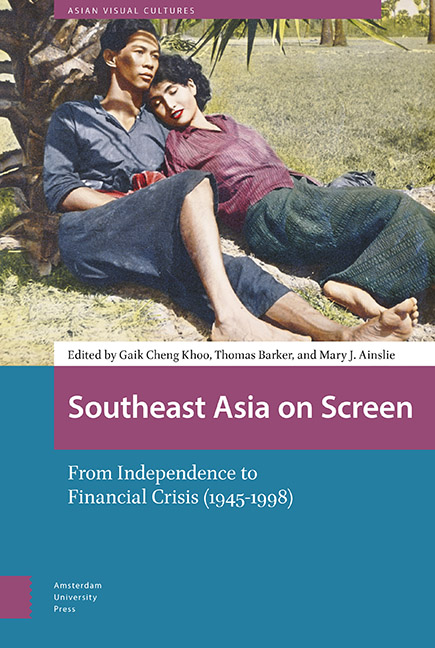Book contents
- Frontmatter
- Contents
- List of Illustrations
- Introduction: Southeast Asia on Screen: From Independence to Financial Crisis (1945–1998)
- Section 1 Independence and Post-World War II Filmmaking: Nation-building, Modernity and Golden Eras
- Section 2 Key Directors
- Section 3 Popular Pleasures
- About the Authors
- Index
2 - The 1950s Filipino Komiks-to-Film Adaptation during the Studio Era
Published online by Cambridge University Press: 20 November 2020
- Frontmatter
- Contents
- List of Illustrations
- Introduction: Southeast Asia on Screen: From Independence to Financial Crisis (1945–1998)
- Section 1 Independence and Post-World War II Filmmaking: Nation-building, Modernity and Golden Eras
- Section 2 Key Directors
- Section 3 Popular Pleasures
- About the Authors
- Index
Summary
Abstract
This chapter explores the relationship between the komiks industry and the film industry in the Philippines during the peak of the 1950s studio era. The discussion outlines how stories from komiks published in magazines and dedicated publications served as source texts for these films. Drawn from earlier oral, theatre and folkloric sources, the komiks funnel story materials towards the films, thereby recycling the success of the texts in previous forms and recreating the genres as means of producing a distinctly Filipino vernacular modernism. It argues that the komiks-to-film adaptation highlights the ability of hybrid/adaptive forms to shape the national-popular imaginary.
Keywords: komiks-to-film adaptation, studio era, vernacular modernism, national-popular
Introduction
In exploring the beginnings of Southeast Asian national cinemas, Roy Armes observes that Philippine cinema ‘offers a full reflection of the country's troubled past and serves as a striking example of the difficulties of establishing a national cinema under colonialism or neocolonial dominance’ (Armes 1987, p. 151). Armes's observation highlights the varied influences upon Filipino cinema: literary and film sources from the colonial era influenced filmmaking considerably, with local filmmakers then building upon this convergence of foreign influences and local expression. A postcolonial reading of Philippine film history highlights this ‘counterformation’ (David 2000, p. 7) of both Spanish and US colonial influences that nevertheless paradoxically resulted in a distinctly Filipino conception of this media form and the forging of a Filipino identity. As a counterformative discourse, the development of Philippine cinema should therefore be viewed as the narrative of Filipino pioneers and innovators, the genres and stories that they bore, and the sources of those productions.
Drawing on the concept of vernacular modernism from the work of Miriam Hansen (2000), this chapter analyses the practice of komiks-to-film adaptation during the studio era in the 1950s. In parallel with the author's previous work (Arriola 2018), this chapter discusses the origins of komiks, their adaptation practices, and the role of the two big studios, LVN and Sampaguita, and their respective producers in popularizing films based on komiks sources, highlighting how komiks and film used the vernacular to re-circulate narratives from various ages of Philippine culture.
- Type
- Chapter
- Information
- Southeast Asia on ScreenFrom Independence to Financial Crisis (1945–1998), pp. 59 - 74Publisher: Amsterdam University PressPrint publication year: 2020

